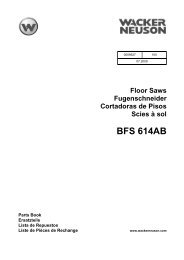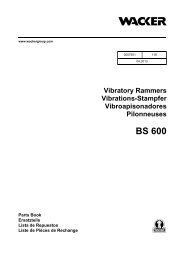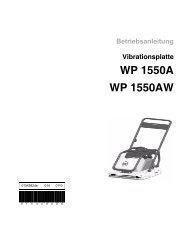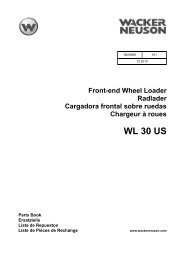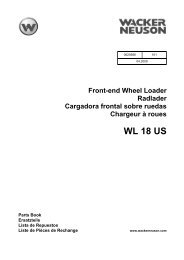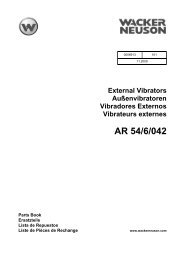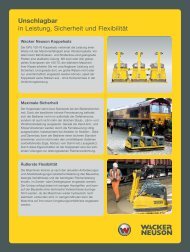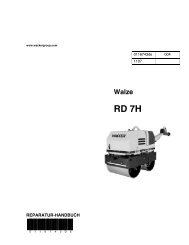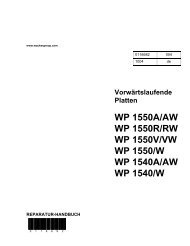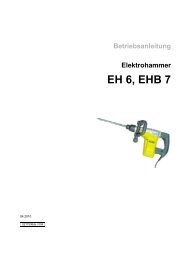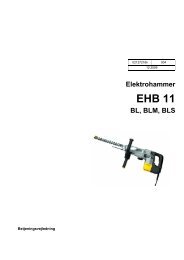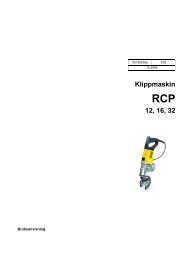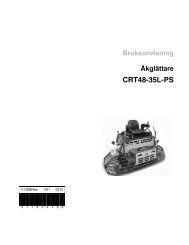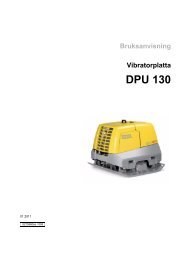You also want an ePaper? Increase the reach of your titles
YUMPU automatically turns print PDFs into web optimized ePapers that Google loves.
5 PD SERIES PUMPS PT / PG / PD REPAIR<br />
5.21 Testing<br />
Suction Test<br />
Required Tools:<br />
Vacuum Gauge - P/N 28755<br />
Tachometer<br />
1. Check that mounting hardware for diaphragm and<br />
valves are tight.<br />
2. If valves are dry, run pump for a few minutes while<br />
adding water through prime plug in suction chamber.<br />
This will wet rubber gaskets in valves and provide a<br />
better seal while testing.<br />
3. Replace prime plug and tighten.<br />
4. Bring engine up to operating speed. Check engine<br />
RPM.<br />
5-20<br />
3000 ±100 RPM<br />
5. Grease mounting face of vacuum gauge (1), to ensure<br />
a good seal. Press gauge over inlet port.<br />
Note: It is not necessary to keep water in the pump case<br />
while testing diaphragm pumps. This pump design does<br />
not use a mechanical seal, which requires water in the<br />
pump case to keep seal surfaces cool.<br />
6. Gauge reading will fluctuate slightly as connecting rod<br />
operates diaphragm.<br />
A HIGH reading of 16 in.Hg (55 KPa) is good.<br />
The pump may operate satisfactorily even at readings<br />
less than this. The valve’s rubber gaskets seal better<br />
while pump is actually working.<br />
1<br />
1034SD04<br />
1033SD65



